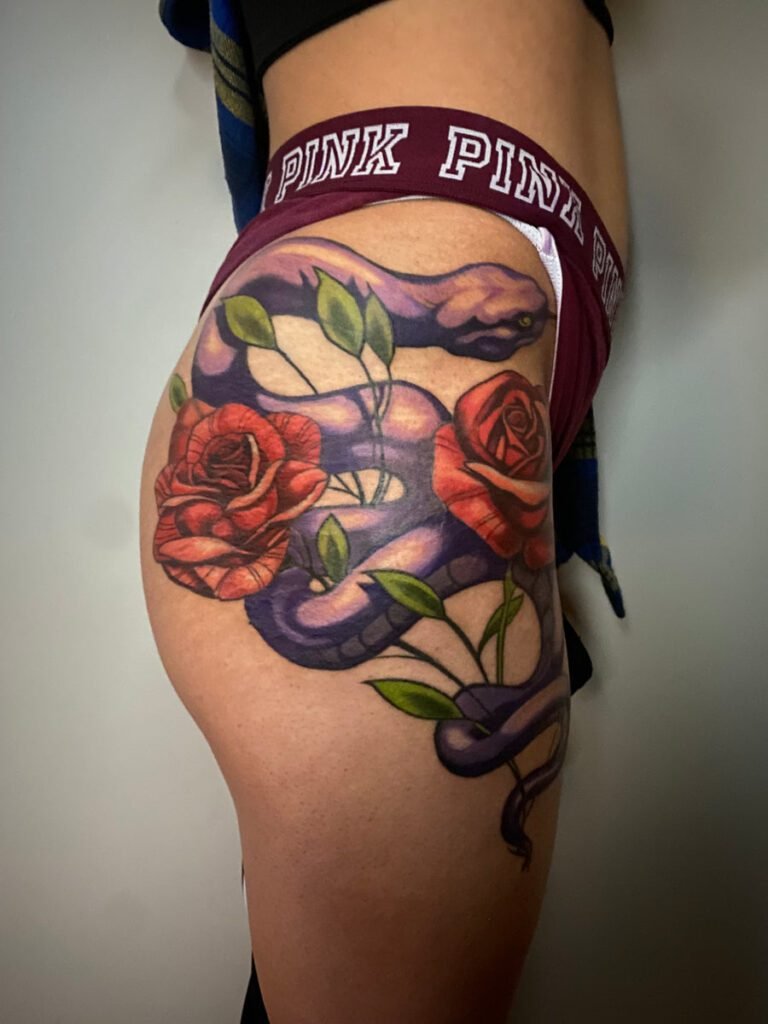If you’ve been tattooing for a while, you’ve probably encountered the problem of having to follow an incompetent tattoo artist to try to fix a bad tattoo.
In today’s episode, Jake looks at what he thinks is the biggest challenge in tackling this issue. Perhaps it’s not what you think. enjoy!
Topics: Bad Tattoo Redo, Tattoo Cover-up, Tattoo Techniques
What to do first when you see a bad tattoo
“In my experience, the technical ability of the tattoo artist you are following up with is usually not the biggest problem to solve…”
When we think of touching up or covering up a bad tattoo, we usually focus on the previous tattoo artist’s technical skill (or lack thereof). We’re talking about blown lines, mottled color, and scars. However, in my experience these are not the biggest obstacles to overcome.
The one thing tattoo artists can’t control
“What this tattooist didn’t realize is how important the shape of the body is. It’s the one thing we can’t control.”
The most common problem (and the first one to address) is the relationship between body shape and existing tattoos.
In this example, the previous tattooist ignored the flowing shape of the client’s thighs and designed a series of shapes that acted as obstructions, interfering with the natural flow of the client’s hips and thighs.
hide a bad tattoo
attempt to solve the problem

“The first thing I did was introduce these widespread leaf shapes to try to lift the viewer’s eye and move it through the composition…”
My first goal with this piece was to introduce a secondary element to break up the hard horizontal shapes introduced by previous tattooists. To solve this problem I decided to use some very simple leaf shapes. I wanted to make sure the leaves looked as if they were part of the original design, so I made some leaves fall behind the snake and others fall in front of the snake. This required getting the tattoo over the sharp lines of the snake, which wasn’t ideal, but sometimes you have to sacrifice perfection in order to progress.
By introducing a strong light source and turning contours into edges/transitions, I was able to distract from most of the bad linework. Most of my issues were resolved (as much as possible) before introducing color. Here is a photo of the finished product.

The tattoo still has its problems (it never completely solved the problem with the rose), but overall it successfully distracts the viewer’s attention from the work’s shortcomings by establishing a hierarchy within the composition I feel like I was able to do that. By using strong value contrasts and intentional light sources on the snake’s body, we draw attention away from the weakest parts of the tattoo and focus on the strongest parts.
thank you for reading!
For more information about Jake Meeks and Fireside Tattoo Network, please visit:
https://www.firesidetattoo.com/
